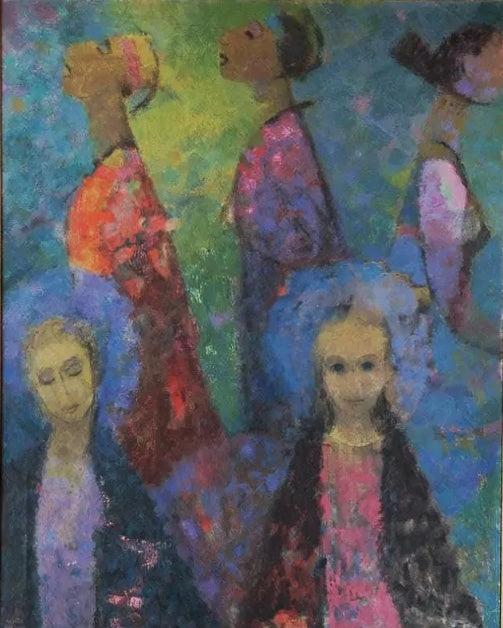
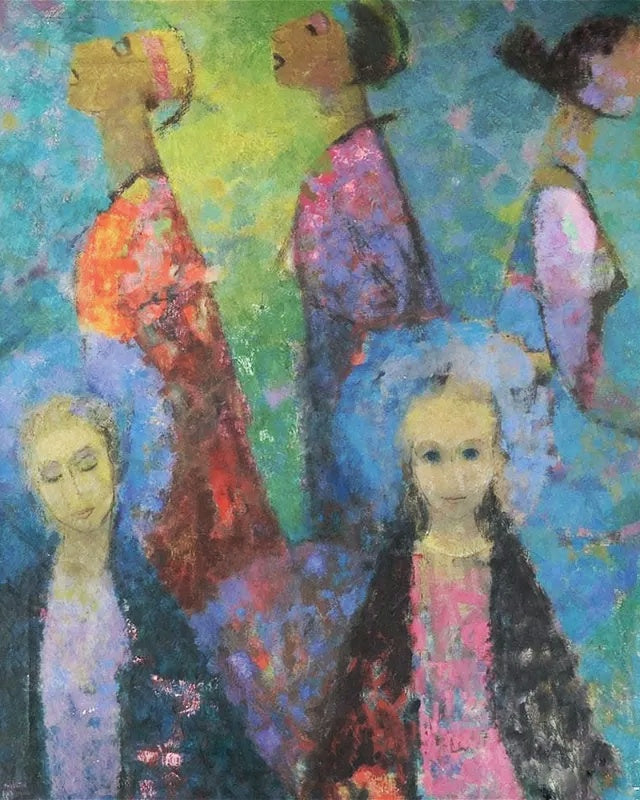
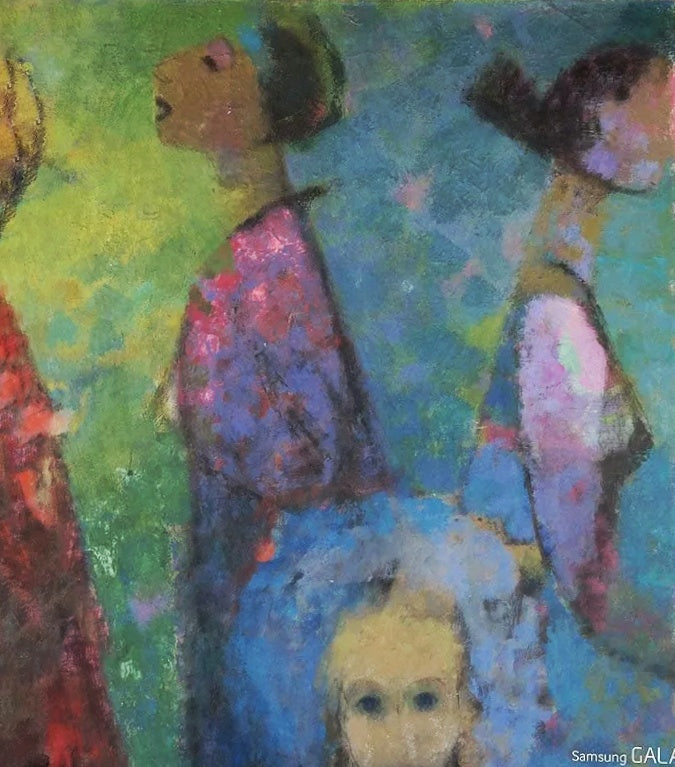
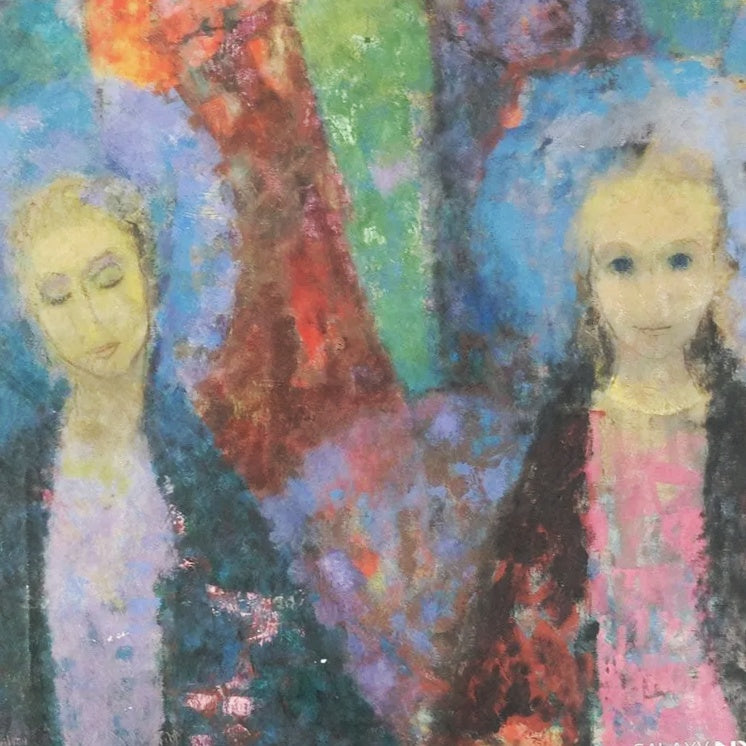
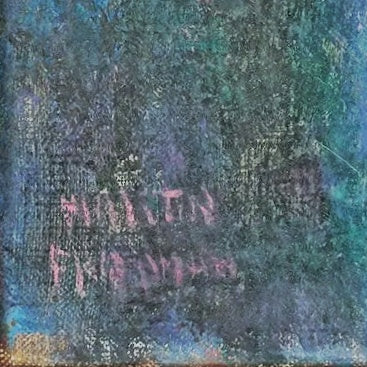
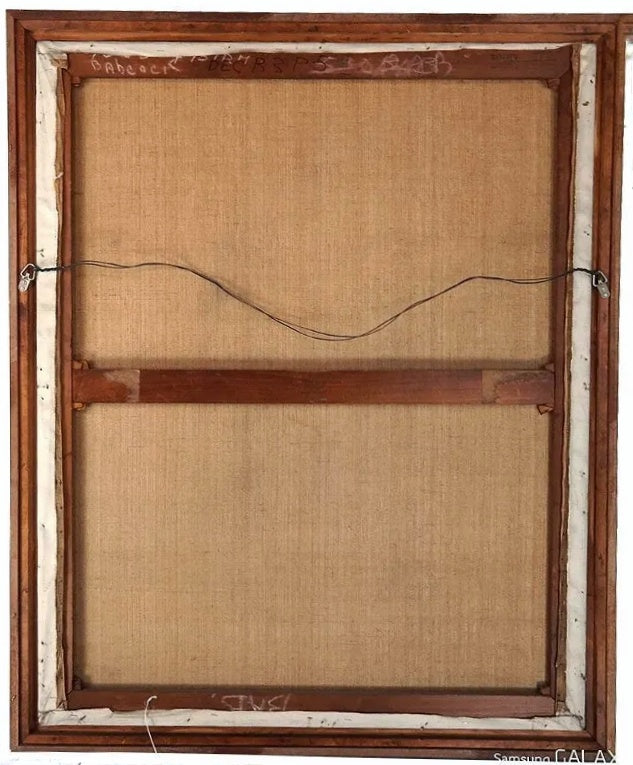
LARGE ATMOSPHERIC OIL ON CANVAS OF FIVE FEMALES BY MARTIN FRIEDMAN (1950s?)
CONTACT US HERE ABOUT THIS ITEM.
Expressionistic oil on canvas by the Hungarian-American painter Martin Friedman (1896-1981). This vibrant work presents five upright female figures—three in profile—rendered in a lyrical, neo-Fauvist palette. They emerge from a featureless background into an atmosphere that may evoke, for some viewers, the Hindu festival of Holi. The work is signed at the bottom left and probably dates from the 1950s.
MARTIN FRIEDMAN (1896-1981) was born in Budapest, Hungary, in 1896. His family immigrated to the US when he was nine years old in hopes of improving their financial circumstances. As members of the working class, they were subject to inspection at Ellis Island. (Mass immigration via the “Gateway to the New World” would peak in 1907, a year after the Friedmans' passage, at 1,004,756 arrivals.) In an interview with historian Dorothy Seckler (1910-1994) for the Smithsonian Institution’s Archive of American Art, Friedman recalls the family settling outside of Yonkers, where he was the only “foreign-born” child in the neighborhood.
In the same conversation, a formative childhood encounter with art is recounted: “We had occasion to go from Budapest to Vienna on the Danube, . . . and I have a very vivid memory of it. Because they played those Mittel-European waltzes. Well, I remember sitting on the boat at night, and all the different rhythms—you know of the paddlewheel chugging away at the water; the rhythm of the waves; and the women dancing—that got me, really: you know, around and around with these wide skirts, and the swish of the skirts, and the odor of the place; and the sound of the music, and the rhythm of this ‘around-and-around.’ I didn't know, I couldn't analyze why I enjoyed it at the time but I did.”
From early adolescence on, Friedman demonstrated an exceptional talent for drawing as well as an aptitude for mathematics. To help support his family, he quit school to begin factory work at age fourteen—laboring twelve hours a day, six days a week. Every spare moment was spent with his pencils. (Copying the illustrations published in the novels of Dickens was a go-to.) When Friedman was fifteen, a family friend noticed the sketches. Impressed, an introduction at the New York Academy of the Fine Arts (later the American Academy of the Fine Arts) was arranged. Quite remarkably, Friedman was accepted into the Manhattan school at sixteen. As his family's main provider at the time, he had to attend art school at night after his daily shifts at the factory. Finally unable to shoulder the load, he quit the factory job and began work as an assistant at a commercial illustration company. Within the year, Friedman hit upon a successful balance: working in commercial art for six months and freelancing for another six.
Friedman’s work can be loosely grouped into three categories: ethereal landscapes; dark, brooding abstracts; and figure studies. The landscapes have soft edges that give them a floating, misty feel. Unlike the impressionists to whom he is often compared, Friedman used vibrant colors, and he consistently emphasized the sky over the land. As a close observer of his process, he early on decided that he was unable to paint en plein air—preferring to rely on his imagination instead. “Once I stopped painting outdoors that was it, because I realized [painting indoors] was for me. Within the space of my four walls I could visualize and be in a world of my own.” Drawn to classical music, Friedman sometimes experienced a kind of synesthesia between the music and his painting. This was an additional reason for him to find working in the studio best: the ability to listen to music while creating.
Rembrandt was a great favorite of Friedman's, and some of his abstract work is reminiscent of the oils of French Symbolist Odilon Redon (1840-1916). However American artist Albert Pinkham Ryder (1847-1917) was arguably his greatest inspiration. Both men relied on the palette knife and multiple layers of paint to achieve subtle fusions of two or more pigments and great depth of color. Friedman's works are often described as having an “inner glow”; even those with darker color schemes seem to have a lightness within, and the same has been said of Ryder. But where Ryder would begin with a thick application of paint using the knife, Friedman always applied his paint with a brush. The knife was then used to scrape away layers, allowing for multiple colors to penetrate the surface. Friedman thus was able to minimize, if not entirely avoid, the craquelure that always plagued Ryder's production.
Martin Friedman's art was first shown publically at New York galleries in 1932. Deeming his work insignificant, however, he eschewed exhibits of his work until the early 1940s. Friedman's paintings would appear in New York City at the Metropolitan Museum of Art, the Carnegie Institute of Art, the Corcoran Gallery of Art, the American Artists Congress, and the World’s Fair; and in Philadelphia at the Pennsylvania Academy of Fine Arts. Friedman was a member of the Woodstock Art Association, the Federation of Modern Painters & Sculptors, and Audubon Artists. He died in 1981.
I would love to have painted like the other fellows and be influenced by the teacher, but I wasn't, I just couldn't. So I painted the way I felt I could, “this is the way I'm going to paint; that's that.” – MARTIN FRIEDMAN
DETAILS
Artist – MARTIN FRIEDMAN
Period/Year – 1950s
Origin – USA
Styles/Movements – FIGURATIVE; EXPRESSIONISM; FAUVISM
Media – OIL
Support – CANVAS
Colors – CERULEAN, CHARTREUSE, MAGENTA, LAVENDER, BLACK
Condition – Excellent vintage condition. Minor wear consistent with age.
Dimensions – 50" H × 40" W × 1" D






